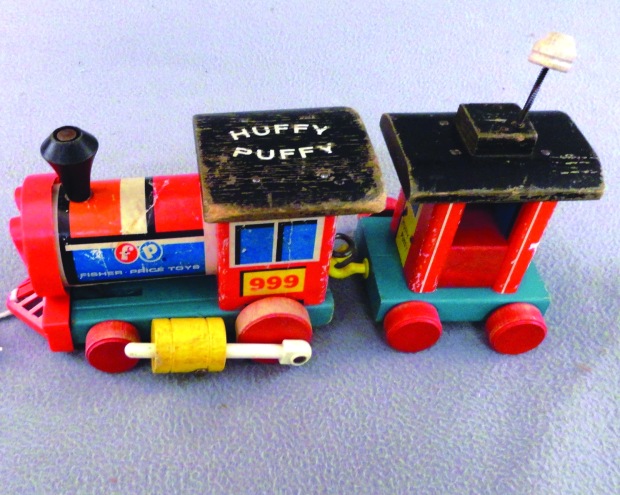If you’re a first-time visitor to the Research Library, it is not immediately apparent what you can do and discover here. So we thought we’d write a list for the neophyte.
1. Look for a relative or ancestor’s obituary. We have a card file with names of people who were listed in obituary columns in Buffalo daily newspapers, 1811-2001. There are about 99,000 names in alphabetical order. While this isn’t every single death reported in almost two centuries of Buffalo newspapers, it is the largest obituary index in Erie County.
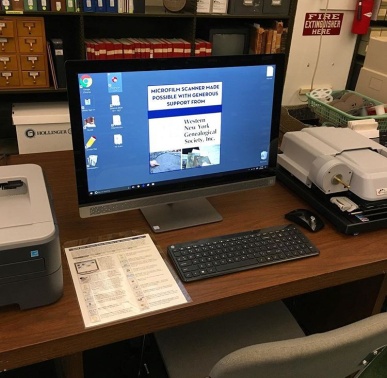 2. Read a newspaper published the day you were born. We have Buffalo newspapers on microfilm from 1811 to about 2011, including Polish and German papers published here. We can get out y
2. Read a newspaper published the day you were born. We have Buffalo newspapers on microfilm from 1811 to about 2011, including Polish and German papers published here. We can get out y
our birthday paper, load it on a microfilm reader-printer, and you can make black & white copies from it for $.25/page.
3. See if we have a picture of the house you grew up in. We have about 30,000 house & building photos from Buffalo & surrounding area. Maybe we have your childhood home or corner store.
4. Figure out where your grandparents lived. If no one can recall for sure where Grandma & Grandpa lived, come on in and consult our Buffalo city directories. We have one for every year from 1828 to 2001, with a few gaps.
 5. Look at Buffalo & Erie County atlases. We have roughly one per decade from 1850 to 1950, with a few gaps. What’s great about them is that they show footprints of individual houses & buildings that used to be there or might still be there today. You can look at them one by one and see when your house first appears, which helps you narrow down when it was built.
5. Look at Buffalo & Erie County atlases. We have roughly one per decade from 1850 to 1950, with a few gaps. What’s great about them is that they show footprints of individual houses & buildings that used to be there or might still be there today. You can look at them one by one and see when your house first appears, which helps you narrow down when it was built.
6. Check our vintage postcards. We have about 8,000 Buffalo picture postcards organized by subject (including many duplicates), plus we have a separate album of about 400 Buffalo cards collected and donated by Phyllis Peyton. Her album is out on a counter for anyone to browse.
7. Use our WiFi. The Museum has free wifi throughout our building. Ask for the log-in at the Front Desk or in the Research Library.
8. Check out our new acquisitions. We are always adding to the collection in one way or another. We purchase Buffalo-related books today that we think will answer questions tomorrow and beyond. Maybe we found something that you didn’t know existed.
9. Look at church records on microfilm. These are important for family history research. New York State did not pass a vital records law until 1880, meaning that there are no government-issued birth certificates, marriage licenses, or death certificates prior to1880. This is where sacramental records come in. We have baptism, marriage, and death records on microfilm from about 180 local congregations, mostly Roman Catholic, Episcopal, and Methodist. Special bonus: we also have some cemetery records on microfilm.
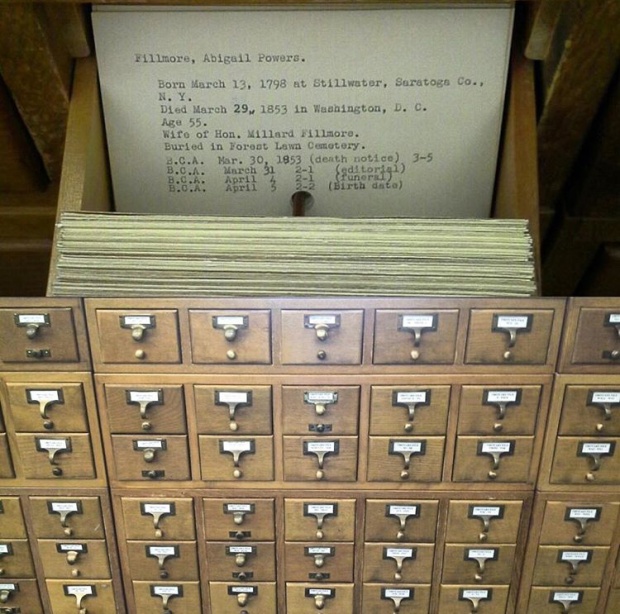 10. Pick our brains. Got a Buffalo-area history question or research problem and you don’t know where to start? Our expert librarians are on duty whenever the Research Library is open to the public. While we cannot undertake your research for you, we can identify and pull out relevant books, clippings, atlases, pictures, microfilms, or more, to get you started. We don’t always know what the answer is; we know (or work to figure out) where the answer is.
10. Pick our brains. Got a Buffalo-area history question or research problem and you don’t know where to start? Our expert librarians are on duty whenever the Research Library is open to the public. While we cannot undertake your research for you, we can identify and pull out relevant books, clippings, atlases, pictures, microfilms, or more, to get you started. We don’t always know what the answer is; we know (or work to figure out) where the answer is.
The Research Library cares for everything two-dimensional collected by the Museum since 1862, mostly paper-based stuff. This includes books, periodicals, newspapers, letters, diaries, personal papers, postcards, photographs, prints, drawings, scrapbooks, microfilms, atlases, maps, pamphlets, and audio-visual material.
The Library is open Wednesdays through Saturdays, 1:00 to 5:00 pm, plus evening hours on Wednesdays, 6:00 to 8:00 pm. No appointments are necessary. Admission is free for members and $7 for general. Questions? Call us at (716) 873-9644 ext. 306 or email library@buffalohistory.org.
Cynthia Van Ness, MLS
Director of Library & Archives
*This article was featured in the Winter 2016-2017 issue of “The Album,” The Buffalo History Museum’s quarterly newsletter.
 Starting in the mid-1960s, a Greek immigrant named James Eoannou purchased his friend’s concession pushcart and began selling popcorn, peanuts, and corn-fritters in North Buffalo neighborhoods. He later moved to Delaware Road and began servicing the suburban neighborhoods in the Town of Tonawanda and the Village of Kenmore. One of the signals that summer had come to Buffalo was the arrival of the popcorn man. James was a full-time cook for the Buffalo Athletic Club and loved to go for long, rambling walks. He decided to put his walks to good use and bring some joy to children, and often the adults, of these neighborhoods.
Starting in the mid-1960s, a Greek immigrant named James Eoannou purchased his friend’s concession pushcart and began selling popcorn, peanuts, and corn-fritters in North Buffalo neighborhoods. He later moved to Delaware Road and began servicing the suburban neighborhoods in the Town of Tonawanda and the Village of Kenmore. One of the signals that summer had come to Buffalo was the arrival of the popcorn man. James was a full-time cook for the Buffalo Athletic Club and loved to go for long, rambling walks. He decided to put his walks to good use and bring some joy to children, and often the adults, of these neighborhoods. 
 2. Read a newspaper published the day you were born. We have Buffalo newspapers on microfilm from 1811 to about 2011, including Polish and German papers published here. We can get out y
2. Read a newspaper published the day you were born. We have Buffalo newspapers on microfilm from 1811 to about 2011, including Polish and German papers published here. We can get out y 5. Look at Buffalo & Erie County atlases. We have roughly one per decade from 1850 to 1950, with a few gaps. What’s great about them is that they show footprints of individual houses & buildings that used to be there or might still be there today. You can look at them one by one and see when your house first appears, which helps you narrow down when it was built.
5. Look at Buffalo & Erie County atlases. We have roughly one per decade from 1850 to 1950, with a few gaps. What’s great about them is that they show footprints of individual houses & buildings that used to be there or might still be there today. You can look at them one by one and see when your house first appears, which helps you narrow down when it was built.


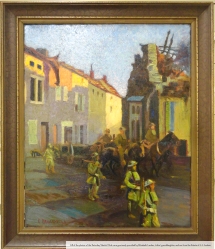 In our upcoming World War I exhibit, “For Home and Country”, we will be featuring an oil painting by Lt. Clement C. Beuchat, entitled “78 Lightening Division at Thiaucourt, France, 1918”. This piece depicts a group of World War I soldiers on horseback in the town of Thiaucourt, France, most likely illustrating the remains of the town during or after the Battle of Saint-Mihiel.
In our upcoming World War I exhibit, “For Home and Country”, we will be featuring an oil painting by Lt. Clement C. Beuchat, entitled “78 Lightening Division at Thiaucourt, France, 1918”. This piece depicts a group of World War I soldiers on horseback in the town of Thiaucourt, France, most likely illustrating the remains of the town during or after the Battle of Saint-Mihiel. While doing the research on this painting and Clement, I learned that Beuchat was an original member of the Saturday Sketch Club in Springbrook, New York along with other artists such as Arthur Kowalski, Harry O’Neill, William J. Schwanekamp, and Julius Lankes.
While doing the research on this painting and Clement, I learned that Beuchat was an original member of the Saturday Sketch Club in Springbrook, New York along with other artists such as Arthur Kowalski, Harry O’Neill, William J. Schwanekamp, and Julius Lankes.  This is notable because there is a sketch box used by Buffalo painter and engraver, J.J Lankes as part of the Saturday Sketch Club, in our collection. The Saturday Sketch Club was formed in reaction to the dismissal of Mr. Earnest Fosberry, an artist and teacher at the Buffalo Fine Arts Academy. A group of students, including those mentioned above, created this art school with Mr. Fosberry as their instructor and critic, as a way to protest the firing of their favorite teacher.
This is notable because there is a sketch box used by Buffalo painter and engraver, J.J Lankes as part of the Saturday Sketch Club, in our collection. The Saturday Sketch Club was formed in reaction to the dismissal of Mr. Earnest Fosberry, an artist and teacher at the Buffalo Fine Arts Academy. A group of students, including those mentioned above, created this art school with Mr. Fosberry as their instructor and critic, as a way to protest the firing of their favorite teacher.
 The students would meet at a cabin out in Springbrook, NY to immerse themselves in nature. They all had their own sketch boxes with attached seats that were portable and could be carried throughout the surrounding area to set up a painting station wherever they liked. The sketch boxes, like the one in our collection, were made up of wooden boxes attached to wooden folding stools that had multi-colored canvas seats for the artists to sit on while they worked. The boxes opened on metal hinges that locked to create makeshift easels. Inside the box would be all the tools an artist would need including a wooden palette, paints, paintbrushes, and charcoal.
The students would meet at a cabin out in Springbrook, NY to immerse themselves in nature. They all had their own sketch boxes with attached seats that were portable and could be carried throughout the surrounding area to set up a painting station wherever they liked. The sketch boxes, like the one in our collection, were made up of wooden boxes attached to wooden folding stools that had multi-colored canvas seats for the artists to sit on while they worked. The boxes opened on metal hinges that locked to create makeshift easels. Inside the box would be all the tools an artist would need including a wooden palette, paints, paintbrushes, and charcoal.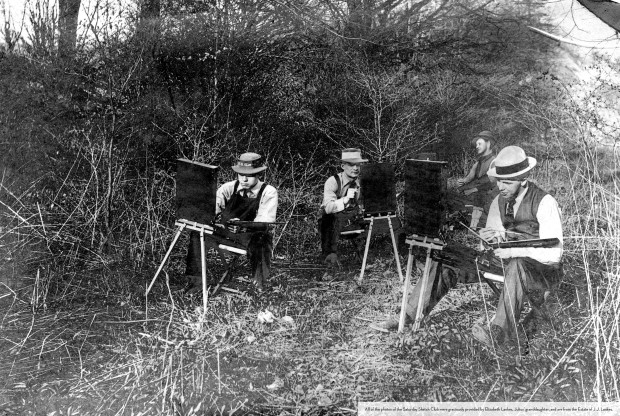
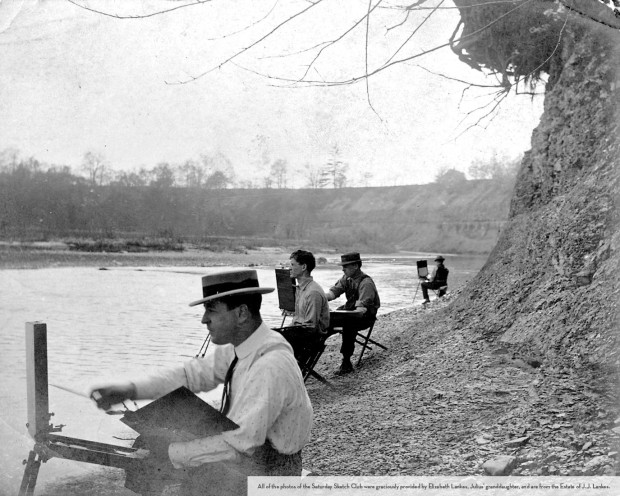

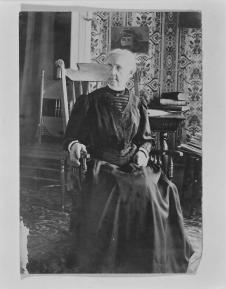 In 1987, Julia Boyer Reinstein, historian and architectural preservationist, donated over 80 quilts and bed coverings to The Buffalo History Museum. Early on in her life, Julia became fascinated with quilts and believed in the importance of documenting their histories. She received a Bachelor’s degree in History from Elmira College for Women in 1928, writing her senior thesis on early American quilts. Beginning her collection with family quilts, she focused her collecting goals on quilts made west of the Genesee River. Remarkably, only twelve of the quilts in her collection were purchased, the rest were given to her as gifts or through inheritance.
In 1987, Julia Boyer Reinstein, historian and architectural preservationist, donated over 80 quilts and bed coverings to The Buffalo History Museum. Early on in her life, Julia became fascinated with quilts and believed in the importance of documenting their histories. She received a Bachelor’s degree in History from Elmira College for Women in 1928, writing her senior thesis on early American quilts. Beginning her collection with family quilts, she focused her collecting goals on quilts made west of the Genesee River. Remarkably, only twelve of the quilts in her collection were purchased, the rest were given to her as gifts or through inheritance. 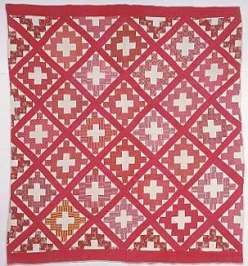 Pictured is a red and white Chimney Sweep quilt from Julia Boyer Reinstein’s quilt collection, also known as an Album or Autograph quilt. It was pieced together by Eliza Graves (later Pickett) between 1852 and 1853, and was assembled and completed in 1854, in Perry, NY. Eliza Graves, pictured above, was Julia Boyer Reinstein’s great grandmother. The Chimney Sweep pattern was very popular for Album quilts in the mid-19th century because a name or inscription could be written on the central cross of each block. According to oral histories from the family, the blocks of this quilt were originally autographed, in pencil, by the young men of Castile, NY.
Pictured is a red and white Chimney Sweep quilt from Julia Boyer Reinstein’s quilt collection, also known as an Album or Autograph quilt. It was pieced together by Eliza Graves (later Pickett) between 1852 and 1853, and was assembled and completed in 1854, in Perry, NY. Eliza Graves, pictured above, was Julia Boyer Reinstein’s great grandmother. The Chimney Sweep pattern was very popular for Album quilts in the mid-19th century because a name or inscription could be written on the central cross of each block. According to oral histories from the family, the blocks of this quilt were originally autographed, in pencil, by the young men of Castile, NY.
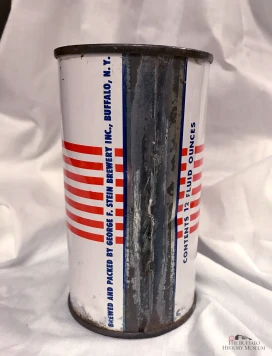 From 1909 until 1918, Stein operated Stein’s Ale Brewery in Medina but returned to Buffalo as the brewmaster of the Binz brewery at 797-807 Broadway Ave. In 1920, Prohibition closed all breweries but Stein purchased the Broadway Ave. building in 1928 and began manufacturing liquid malt, concentrated malt and syrups to sell to bakeries as the Broadway Blending Company. When beer was legalized in 1933, Stein began to brew beer again at the George F. Stein Brewery Inc. until his death in 1938.
From 1909 until 1918, Stein operated Stein’s Ale Brewery in Medina but returned to Buffalo as the brewmaster of the Binz brewery at 797-807 Broadway Ave. In 1920, Prohibition closed all breweries but Stein purchased the Broadway Ave. building in 1928 and began manufacturing liquid malt, concentrated malt and syrups to sell to bakeries as the Broadway Blending Company. When beer was legalized in 1933, Stein began to brew beer again at the George F. Stein Brewery Inc. until his death in 1938.